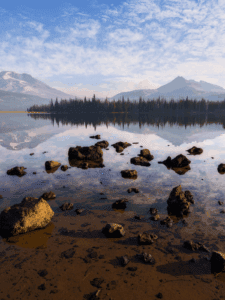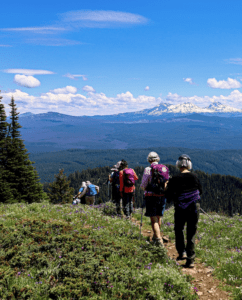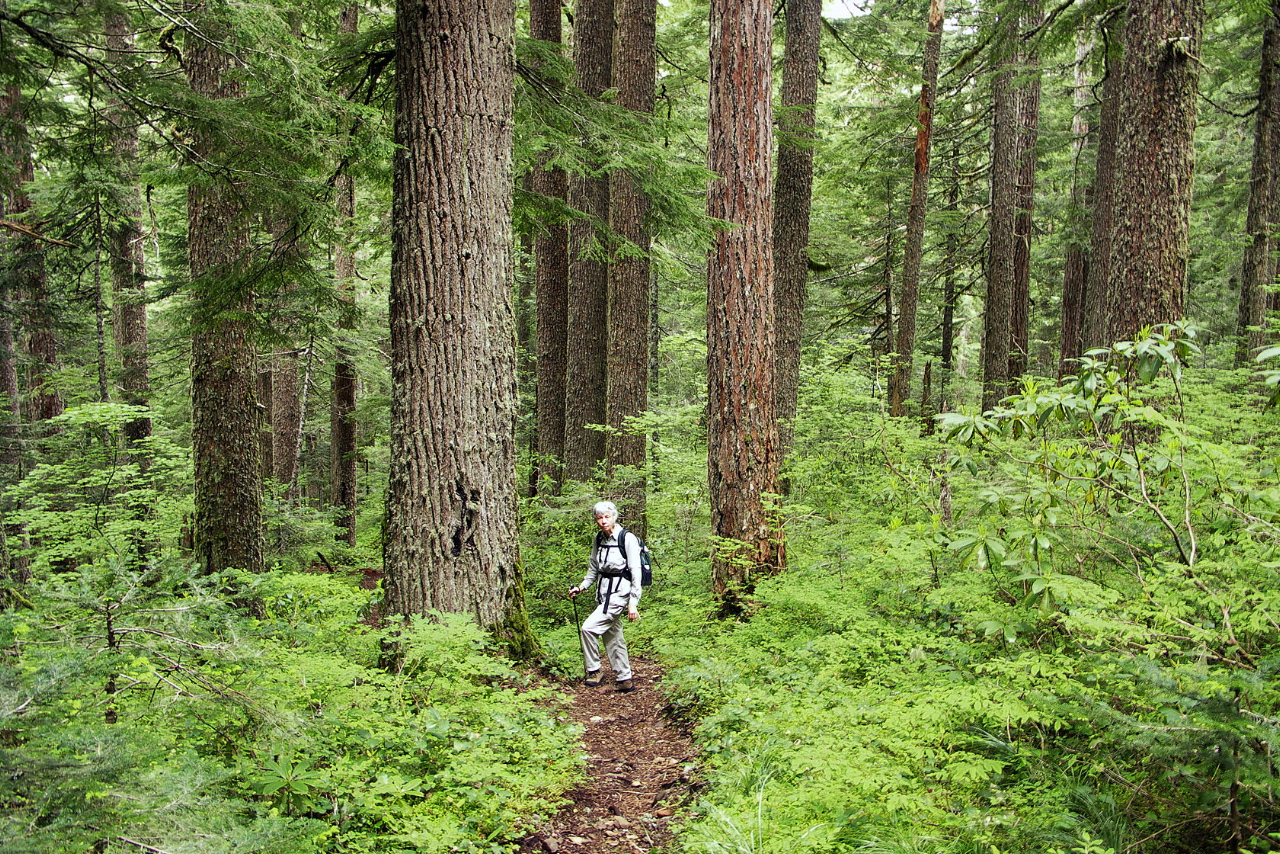Highlights
Difficulty: Moderate
Distance: 6.75 mile loop
Elevation Gain: 1,200 feet
Season: Late spring through early fall, access depending on snow
Notes: A parking pass or permit is required at this trailhead. Road accessibility can be checked here.
About this Hike
Larch Mountain is home to impressive groves of western hemlock, Douglas-fir, and some noble fir, all of which can be found along this trail. Many of the trees are 400 years old or more.
The suggested seven-mile loop trail includes segments of four different trails with multiple trail junctions, so it’s good to be prepared with a map.
From the Sherrard Point parking area, begin the loop to the left of the bathrooms by heading clockwise (on the map) on Larch Mountain Trail #441. Descend through a dense forest of firs and hemlock. At a trail junction, be sure to stay to the right onto Multnomah Spur Trail #446 (the trail to the left enters the Mark O. Hatfield Wilderness and eventually leads down to Multnomah Falls), then Oneonta Trail #424.
When you cross the first log footbridge over Multnomah Creek, turn right on Multnomah Way Trail #444 and you will soon pass a marshy meadow with a view of the top of Larch Mountain. A half-mile from the bridge Trail #444 enters a beautiful ancient forest grove with all the components of an old-growth forest. The trail climbs back out of the basin over the next few miles, and eventually ends at a hairpin turn on Larch Mountain Road. Follow the road uphill a quarter mile to reach the parking area and your car. It’s worth taking a side trip up the steps to see the view from Sherrard Point before you leave.
Getting There
Heading east from Portland on I-84, take Exit 22 for Corbett. Proceed uphill 1.6 miles on NE Corbett Hill Road. At the top of the hill turn east (left) on the Columbia Gorge Scenic Highway, and follow signs for Crown Point and Multnomah Falls. In two miles bear right on Larch Mountain Road. Continue 14 miles through a corridor of second growth forest to the trailhead parking area at the end of the road. Signs along this corridor indicate that no logging is allowed within 200′ of the road, providing a “screen” for the clearcuts and heavily damaged land beyond.
Take Action
Oregon Wild has worked to defend the forests here from logging for years, and have sought protection as Wilderness, with only partial success so far. Learn more about these efforts here.



